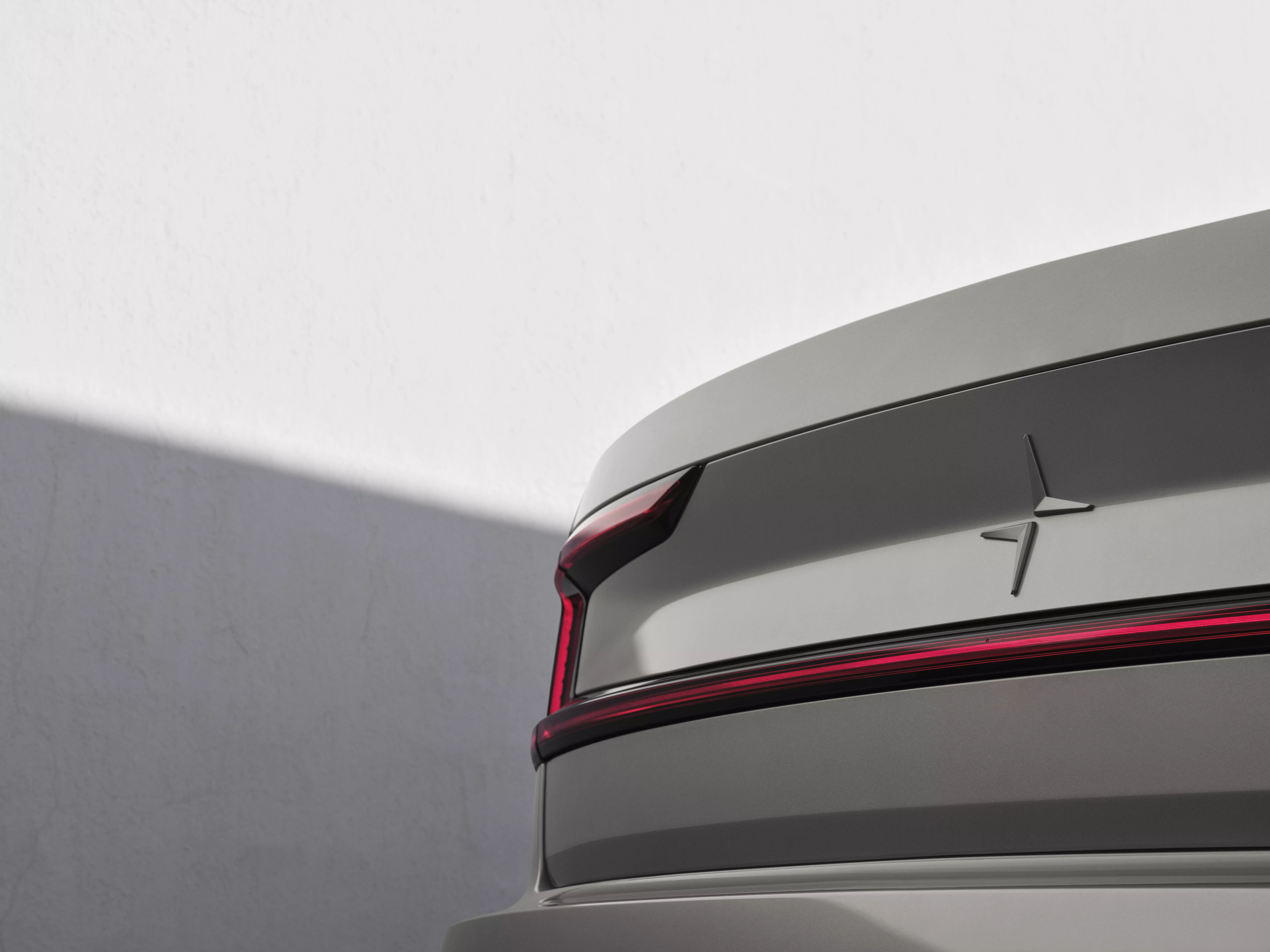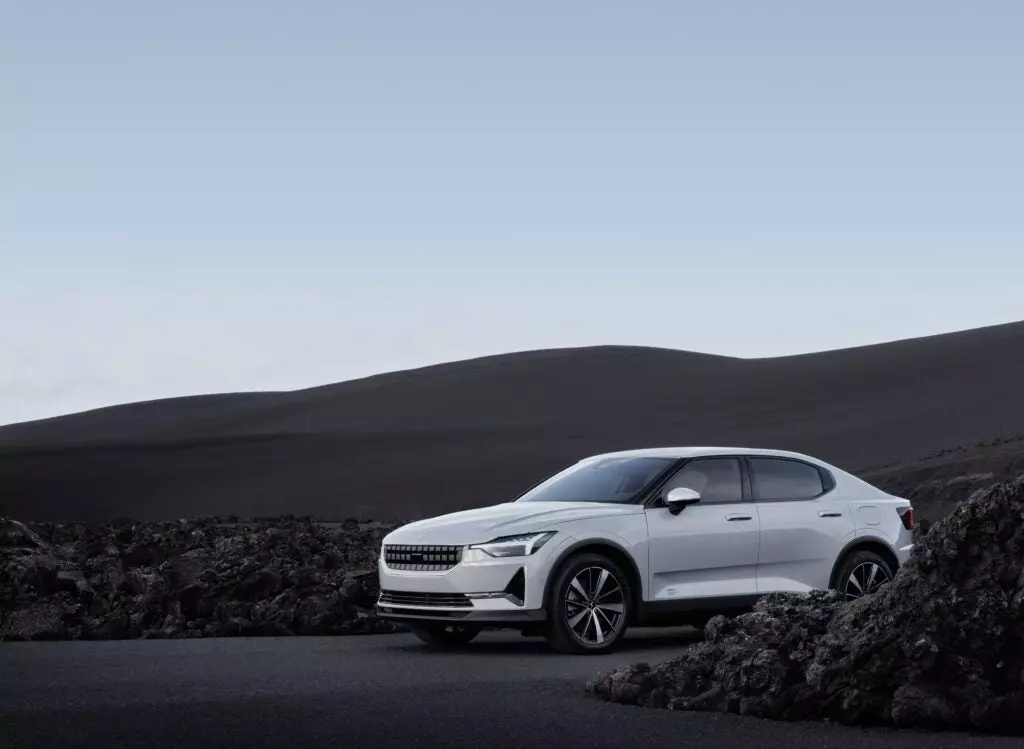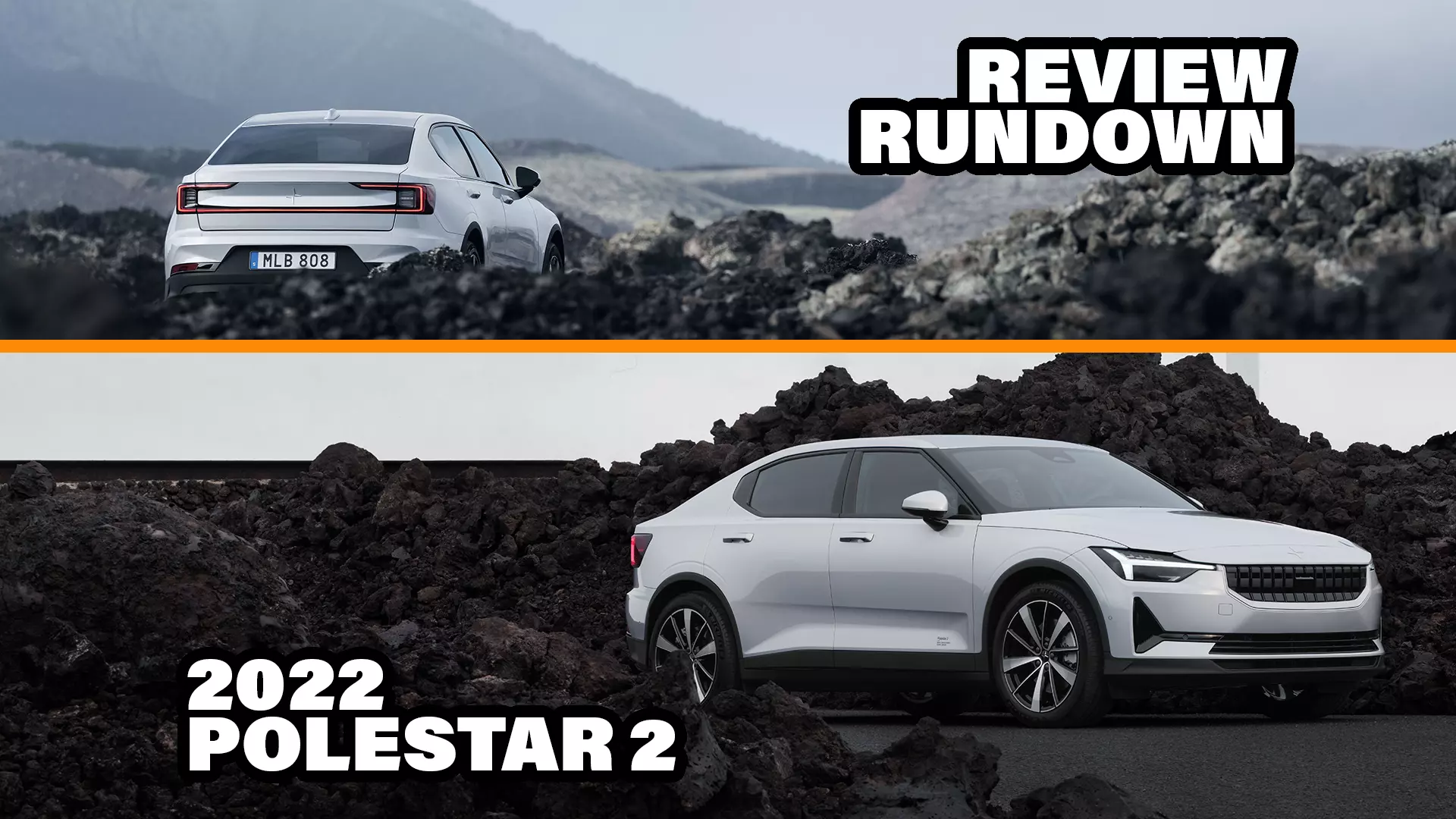The second Polestar vehicle to come out as something separate from Volvo has finally found its way into the motoring press. This is the first fully electric car Polestar has put to market; the Polestar 1 being a plug-in hybrid coupe with a gasoline engine and 619 system horsepower. Neither will likely be common any time soon, but the 2 is a more mass-appealing machine with four doors and practical proportions. This post will round up a selection of driving impressions so you can get a range of perspectives on what it’s like.
The Polestar 2 has debuted with dual motor and performance variants. Now we have the truly mass-market Polestars coming in 2022 with less expensive single-motor cars, as well as Long Range trims to supplant the Performance models. Admittedly, that Long Range they claim (265 EPA miles for the single motor) doesn’t feel so long anymore, especially when the Tesla Model 3 Long Range has 353 EPA-estimated miles, and the Ford Mustang Mach-E Premium has 300 EPA-estimated miles to boast. So the Polestar has to sell itself with other means.
Those methods of making and selling this car are actually novel and innovative. Polestar will sell its product directly to customers through the internet and the 2 is mass-produced in China on the Volvo/Geely Compact Modular Architecture (CMA) shared with the XC40 and C40. With that, Polestar seems to be aiming at changing car buying and EV perceptions with a car that is ultimately very Volvo. With a truly sporting character and typically Swedish build quality, the Polestar 2 might not shatter the segment, nor does it aim to, but it offers a compelling argument for a straight-shooting premium EV.
Welcome to our Review Rundown of the Polestar 2.
Here’s the Scoop
Polestar is ultimately a sub-brand of Volvo and not the fresh player that it may want to be. The styling, engineering, and interior space are all very Volvo, and Polestar isn’t doing a lot to differentiate itself. Motifs like the “Thor’s hammer” headlights, general design attitude, and interior space share sensibilities with Volvo, and the platform underneath the car is completely Volvo. That may be a negative or a positive depending on the buyer, but I think it means that the car comes from proven and striking engineering and design roots, and the innovation is focused on the electric drivetrain (which is definitely a positive).
The Polestar 2 Long Range has an EPA-rated 265 miles of range, which feels somewhat diminished compared to the quickly crowding marketplace. The Tesla Model 3 Long Range offers almost 100 more miles and a comparably-priced Ford Mustang Mach-E offers a nice, round 300 miles. While that might sound like Polestar is stuck in the past, 265 miles is plenty of range for most. Whether EV buyers care about the semantics around the “long range” is yet to be seen, but those lost miles certainly matter on spec sheets. EPA range has been debated hotly, especially because it doesn’t tell the full story with battery management and longevity. Famously, the Porsche Taycan had a low EPA estimated range with a much higher real-life range in several tests. Let’s hear from the pros.
On Interesting Tech And How It Compares To Competitors
The main thing I’m reading and hearing from our colleagues across the industry is that the stated range of the long-range car doesn’t quite feel competitive compared to direct competitors, especially considering that it exists on a platform designed for a gasoline car. That’s not to say that it’s inadequate, but it may stave off range-conscious buyers looking for the least amount of anxiety around charging, even if the PS2 offers what could be the most “premium” and normal experience in the segment.
There are a couple of things that reviewers pointed out that are important: the Polestar 2 doesn’t ship with Apple Car Play support but it does have Android Auto. Polestar claims Car Play will be added via an over-the-air update later this year. Also, the 2 qualifies for some state incentives that dramatically reduce the price of the car, down to the mid $30,000 range in some cases.
Mike Spinelli for The Drive – “If you’d expected Polestar to disrupt Tesla’s energy loop and maneuver into the kill zone, you’ll be disappointed. Its strategy is to build square-shooting vehicles in an effort to win over internal-combustion buyers who relate to a low-key Scandinavian ethos, and perhaps are turned off by Tesla’s marketplace antics. We’ll see if that’s a sustainable strategy, but with the financial muscle of its parent, Polestar has the breathing room to be circumspect; it’s been building its team and strategy, getting its quality equation (and sales channels) dialed in, all while taking advantage of the tax-credits its cars still garner as a major selling point. This approach also means not engaging in aggressive moves like trading battery longevity for higher range numbers or joining in the acceleration-rate battle…The big electron in the room, however, is one of semantics. That is, the tension between Polestar’s definition and the reality that 265 miles on a charge only qualifies as “long range” among its own vehicles and among other carmakers not named Tesla. An equivalent Model 3 Long Range books 353 miles on the EPA cycle. Putting aside the technical realities of managing battery longevity, the quirks of the EPA’s adjustment factor system, and any other product-marketing considerations, Polestar’s got quite a needle to thread among potential customers who look quizzically at the spec sheet.”
Gabriel Vega for Motor1 – “Since the 2022 Polestar 2 Single Motor has to contend with the wildly successful Tesla Model 3 and its impressive stats, let’s talk about range. In total, Polestar estimates that the Single Motor variant will be capable of 265 miles of range, but this hasn’t yet been certified by the EPA. The Dual Motor car has an official EPA estimate, and its range bumps slightly from 233 miles in 2021 to 249 in 2022. To take care of early Polestar 2 adopters, the Swedish carmaker plans to release an OTA update to increase the range of the 2021 models it has already sold.
In contrast, the aforementioned Tesla Model 3 boasts range figures of 262 miles for its single motor configuration and 353 miles for its long-range dual-motor setup.
As mentioned earlier, the Polestar 2 houses a 78-kilowatt-hour battery pack with 75 kWh of usable capacity. This includes 27 modules and 324 cells. The Polestar 2 has operates at400 volts, which supports up to 155-kW DC Charging. In 33 minutes, you can expect to jump from 10 to 80 percent at 150 kW. If you’re at home with a Level 2 charger, expect a charge time of eight hours at 11 kW.
Joel Feder for Green Car Reports – “For all that is good with the Polestar 2 the less expensive single-motor version doesn’t fix the compromised packaging at some level. Front seat headroom is improved thanks to the metal roof (instead of glass), but the car is still based upon an ICE platform. This means the battery modules are placed under the footwells, in the center tunnel, and under the rear seat. The rear seat is mounted stadium style, which has rear-seat occupants sitting up high, leering over the driver’s shoulder, and there’s a lack of headroom. At 5’10” I had only a few inches between the top of my head and the roof. Rear-seat foot room is also at a premium, and up the frunk is a larger-than-it-looks 15.4 cubic feet.
For those who want an electric car as a daily driver, don’t need the Supercharging network to charge or take frequent road trips, and are willing to live with some packaging compromises, the Polestar 2 makes a lot of sense. Suddenly there’s a premium electric car with actual build quality that can be had for a reasonable price should someone be willing to live outside the Teslaverse.”
On The Interior
One of the real incentives to buy a Polestar 2 is the interior. It’s a highlight of the car, and it never punishes you for choosing a lower trim. It is still related to Volvo so it’s fastened together well with classic Swedish grayscale color tones throughout. It looks smart and pleasant to be in with no gimmicks but missing some refinement with the infotainment. Namely, the current lack of Car Play, lack of AM radio, and lack of satellite radio. Joel Feder for Green Car Reports – “A base Polestar 2 doesn’t feel like a stripped-down economy car. The seats and part of the dashboard are covered in a fabric that looks and feels terrific, with an almost retro design that while not quite houndstooth, reminded me of that style. The trim on the dashboard and center console is a 3D-design that adds depth where wood simply looks dull and flat. Surprisingly, the base interior looks better in my eyes than the Plus Package and its reconstructed wood trim or the leather interior option.”
Mike Spinelli for The Drive – “With an intuitive digital dash binnacle and a portrait-oriented console screen that assembles information into easy-to-use quadrants, the UX/UI is clean, intuitive, and responsive. The embedded Google system made me almost forget to wish they’d already rolled out the Apple Car Play implementation coming later this year. Using the Google Assistant’s well-developed natural-language commands for navigation and climate controls did made me wish the system was more deeply embedded into the car’s control systems. Naturally, there are safety and security issues to that level of integration, but it felt like it should be there, which you might say is a testament to how well the system works.”
Eric Stafford for Car and Driver – “Racking up those miles in the Polestar 2 is enjoyable thanks to an elevated seating position and a tall greenhouse with good forward visibility. The back seat is comfortable enough for two adults, and there’s lots of cargo space under the rear hatch. The 2’s interior looks minimalistic, but the space has distinctive finishes and sturdy panel fitment. It feels like sitting in a Scandinavian coffeehouse–except there’s only one easily accessible cupholder between the front seats; a second is hidden under the center-console lid. The centerpiece of the cockpit is the vertically mounted 11.2-inch touchscreen, which features an innovative Google-developed OS infotainment system meant to replicate the feel of a smartphone or a tablet.”
On Performance and Road Refinement
Another meal ticket for the Polestar 2 is an unusually sporting character, at least in the dual-motor variants. The single-motor cars remain surefooted around bends but ultimately struggle with the torque of the EV drivetrain. Any way you go with the Polestar 2 will give you a satisfying EV driving experience, with serenity and insulation.
Gabriel Vega for Motor1 – “From a giddy-up perspective, you’re picking between a fast car and a faster car. While these two variants have significant power differences on paper, they feel pretty similar on the road, especially in crowded city streets. The instant response from the electric powertrain means that even the Single Motor variant feels far quicker than its 7-second dash to 60 miles per hour would suggest. In short, there are no losers in this matchup.
The same goes for how the Polestar 2 behaves at speed and on twisty back roads. Thanks to a 1,100-lb (499 kg) battery pack weighing things down, even the FWD Single Motor variant manages to provide excellent grip with little understeer. However, thanks to its suspension setup, the Single Motor tends to roll considerably in the corners.”
Mike Spinelli for The Drive – “Road feel is where the Polestar 2 plants its flag. Driven in a measured way, the standard models comport themselves elegantly. Benefiting from a low center of gravity, the PS2’s front struts and rear multilink setup rein in the cars’ two-and-a-quarter-ton bulk, yielding relatively flat cornering and a comfortably taut yet supple ride quality. That tautness falls away as you push it toward the adhesion limits of the Michelin Primacy all-season tires and it rolls and pitches a bit, which is where the Performance Pack’s trick adjustable Ohlins would shine. Once, a pothole caused a slam against the bump stops so jarring I got out to check for damage, but found none. Shallower imperfections barely registered.”
Daniel Golson for CNET Roadshow – “The single-motor 2 might not have the punch of the dual-motor car, but it’s still plenty quick off the line and has more than enough passing power for highway driving. The base car rides on 19-inch wheels with Michelin Primacy 4 all-season tires that provide a smoother ride than the optional 20s, most notably over rough surfaces. This standard setup is more compliant than the firm Öhlins dampers you get with the Performance package, though the base car has more body roll in corners. On really twisty mountain roads there’s almost no understeer or torque steer, even when I really push it and accelerate hard out of a corner. The all-wheel-drive model has even more grip and feels much quicker and more planted in corners, but as far as front-drive EVs go the Polestar 2 is easily one of the most fun to drive, and a good set of summer tires would make it even better.”
Gallery





Verdict
The 2022 Polestar 2 feels like a compelling argument for some but not for all. It seems like a smartly styled, intelligently engineered, and well-made EV, but the range will scare some buyers away from spending their hard-earned. Though it is subjective, it is the most striking looking of the segment and I’m willing to bet money that it is better built than the rest too.
Review Context
All of the reviews for the 2022 Polestar 2 were conducted in and around Santa Fe, New Mexico that took reviewers on an 82-mile scenic drive across the state and through several levels of elevation. Polestar flew journalists to Santa Fe at its cost.









